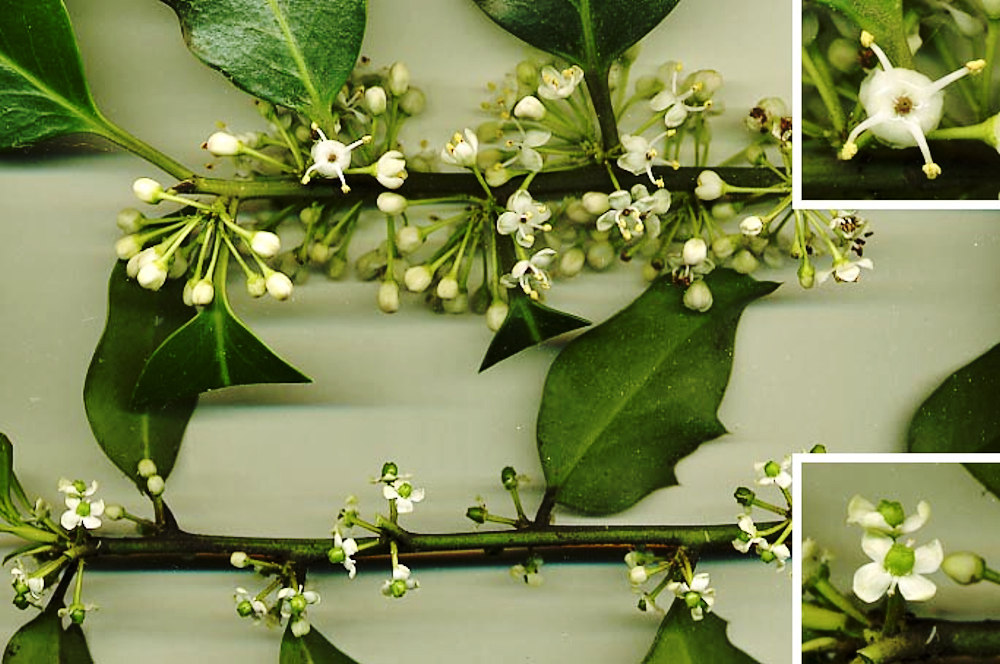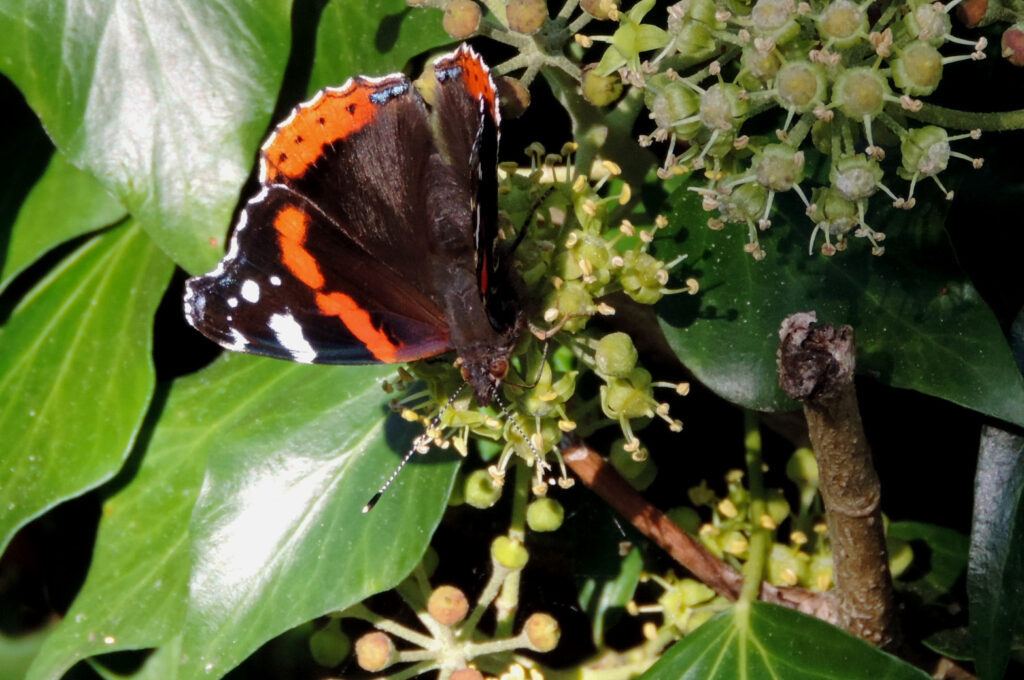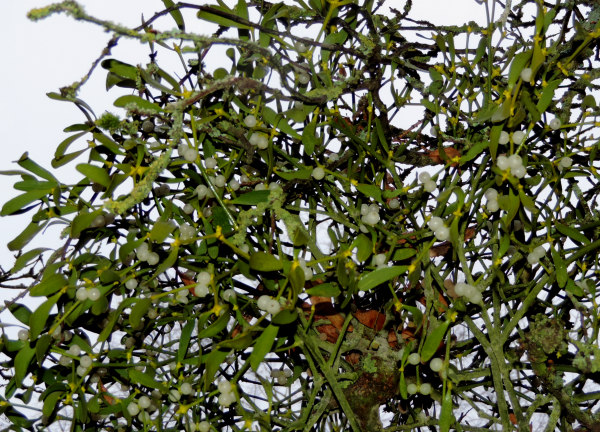As we approach winter and the Christmas period, some plants found in the UK become more apparent and are used in the festivities. I’m going to look at three plants this month (holly, ivy and mistletoe) and have investigated their symbolism and folklore, something I always find fascinating.
Holly (Ilex aquifolium)
Bringing in evergreen boughs to decorate mid-winter is a custom which goes back to pre-Christian times. In many ancient cultures, the howling, icy winds in the dark nights of winter were believed to be ghosts and demons. Decorating with holly was thought to ward off these evil spirits. Holly with its sharp spines and red berries was also seen as a powerful fertility symbol and the plant was accommodated by Christianity with the holly standing for the crown of thorns and the berries for Christ’s blood.
Holly is dioecious and the sex cannot be determined until the plants begin flowering, usually between 4 and 12 years of age. The fruit only appears on female plants and matures around October or November – they are very bitter at this time due to the ilicin content and so are rarely eaten until late winter after frost has made them softer and more edible.
Holly flowers
European holly flowers: male above, female below (leaves cut to show flowers more clearly). Photo credit: Tigerente from Wikimedia Commons
Ivy (Hedera helix)
When a lot of flowering plants are starting to die off in late summer, ivy starts to produce strong-smelling blooms and pollinators that are still on the wing use it to forage. Late-flying butterflies such as Red Admirals and Commas can be found nectaring on the flowers; it is also a vital food source for the Common Drone Fly, social wasps, Honey Bees and the Ivy Bee which arrived in the UK in 2001.
This familiar evergreen climber symbolises new growth and brings good luck by warding off evil spirits. The use of ivy during winter goes back thousands of years. Because it is evergreen, it was believed to hold magical properties and symbolized eternal life, rebirth and the spring season. For a period, ivy was banished as décor by Christians due to its ability to grow in the shade, which led to its association with secrecy and debauchery.
Mistletoe (Viscum album)
A partial parasite on a variety of trees, mistletoe becomes much more obvious when trees shed their leaves. Although it engages in some photosynthesis, mistletoe takes its minerals from the host tree. There can be huge clumps on apple, lime, hawthorn, poplar, maple and willow. The flowers are bud-like clusters, with males and females on separate plants; berries appear in November and December.
The mistletoe tradition is still strong over the Christmas period and kissing under it is well-known. The use of mistletoe can be traced back to ancient cultures in which it was revered as a fertility and health symbol. Especially to medieval people, it was viewed as magical – a plant without roots or obvious sources of food, that grew up above the earth and stayed green-leafed when other plants were bare. It was a perfect example of spontaneous generation and continuing life. The Druids believed that it would ward off evil and throughout the ages, its berries and leaves have been used to treat diseases and promote fertility. As part of Druid rituals, mistletoe was hung in stables and homes to protect against evil and mischievous spirits.
Today, mistletoe is associated with goodwill, eternal life and friendship, with love believed to reside in the homes that it adorns. In hanging a fresh sprig indoors every year, love is invited into the home which explains why we have the practice of kissing under it. In the 19th century, the custom at the time was for a man to kiss any woman underneath the mistletoe, and a berry would be picked with each kiss. It was good luck to accept and bad luck not to.
Mistletoe for sale at Christmas is now mostly imported from northern France. But it should not be cut every year – mistletoe is dioecious, with separate berryless male and berried female plants, and stocks of females need building up periodically.
Once a familiar sight, now orchards are vanishing in the current farming landscape, mistletoe is finding alternative hosts on limes and poplar in parks and gardens.



